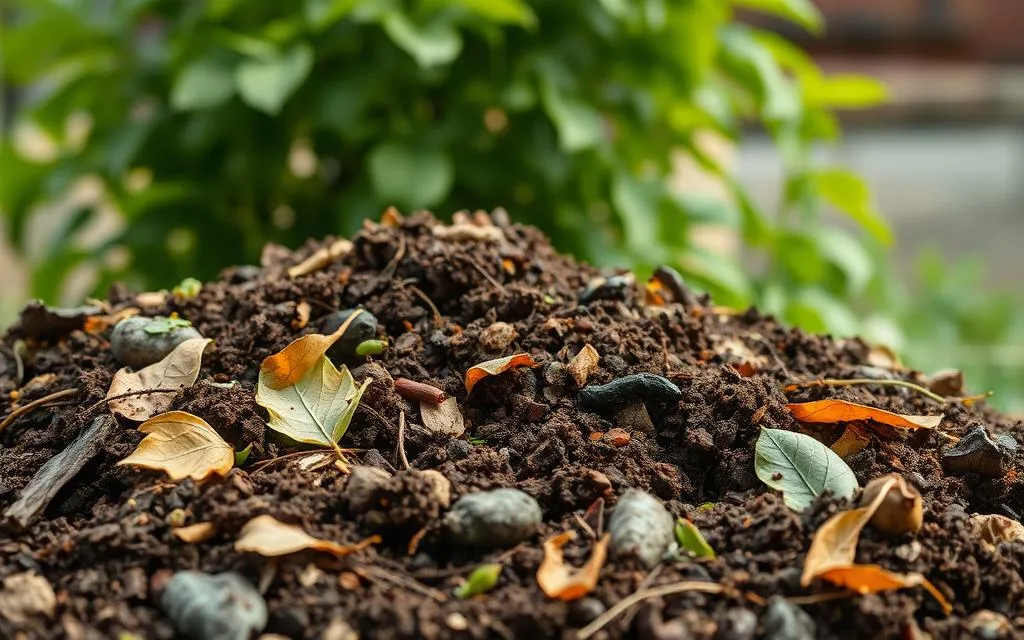Living a more sustainable lifestyle is one of the most impactful ways to reduce your environmental footprint and contribute to a healthier planet. With climate change and resource depletion becoming increasingly urgent issues, small but consistent changes in daily habits can lead to significant long-term benefits. Whether you’re looking to cut down on waste, save energy, or support eco-friendly initiatives, adopting sustainable practices doesn’t have to be overwhelming. By focusing on practical and achievable steps, you can create a lifestyle that aligns with environmental responsibility without sacrificing comfort or convenience. This article explores 5 easy ways to live a more sustainable lifestyle, offering actionable strategies that can be integrated into everyday routines.
Table of Contents
ToggleReduce Single-Use Plastics
One of the simplest yet most effective ways to live a more sustainable lifestyle is to reduce single-use plastics. These disposable items, such as plastic bags, bottles, and packaging, are a major contributor to pollution and waste. Globally, over 8 million tons of plastic enter the oceans each year, harming marine life and contaminating ecosystems. By making a conscious effort to minimize plastic use, you can significantly lower your environmental impact.
Choose Reusable Alternatives
Replacing single-use plastics with reusable alternatives is a key strategy in sustainable living. For example, carrying a reusable water bottle or shopping bag can eliminate the need for plastic bottles and bags. Reusable straws, beeswax wraps for food storage, and metal or bamboo cutlery are also excellent substitutes. These items not only reduce waste but also save money in the long run by cutting down on the cost of disposable products.
Daily Habits for Plastic Reduction
Incorporating reusable items into your daily routine requires a small shift in habits. Start by using a reusable coffee cup if you drink coffee regularly, or bring your own container for takeout meals. Additionally, opt for refillable toiletries in bulk, such as shampoo and conditioner bottles, to avoid single-use plastic packaging. Over time, these small changes become second nature, making sustainable living more accessible.
Avoid Plastic in Everyday Products
Many household products, like plastic toothbrushes and single-use plastic containers, can be replaced with eco-friendly alternatives. For instance, bamboo toothbrushes are biodegradable and durable, while glass jars can replace plastic containers for storing food or household items. When shopping, look for products with minimal packaging or those that use recyclable materials. This not only reduces plastic waste but also encourages eco-conscious consumerism.
The Impact of Plastic-Free Choices
By choosing plastic-free products, you’re not only reducing your own waste but also influencing others through your purchasing decisions. For example, using cloth napkins instead of paper towels cuts down on waste and supports a circular economy. Similarly, refill stations for household cleaners and detergents are becoming more common in eco-friendly stores, allowing you to reduce plastic consumption without compromising on quality.
Optimize Energy Use at Home
Energy consumption is a major contributor to greenhouse gas emissions, so optimizing how you use energy at home is a crucial step toward a more sustainable lifestyle. According to the International Energy Agency, buildings account for about 39% of global energy-related CO2 emissions. By making smart choices with your energy use, you can lower your carbon footprint and save money on utility bills.
Switch to Renewable Energy Sources
Using renewable energy, such as solar or wind power, is one of the most impactful ways to reduce energy-related emissions. Renewable energy sources are eco-friendly and provide a cleaner alternative to fossil fuels. Many countries now offer solar panel installations or green energy subscriptions that allow households to switch to renewable power. Even if you can’t go fully off-grid, using renewable energy for a portion of your needs can make a meaningful difference.
Benefits of Renewable Energy
Switching to renewable energy not only reduces your carbon footprint but also promotes clean energy adoption. For instance, solar panels can significantly cut electricity bills while reducing reliance on coal or natural gas. Additionally, investing in energy-efficient appliances and smart thermostats can further enhance your sustainable living efforts. These technologies help you use less energy while maintaining comfort.
Improve Home Energy Efficiency
Enhancing the energy efficiency of your home is another effective way to live a more sustainable lifestyle. Simple upgrades like insulating windows and doors, using LED light bulbs, and installing double-glazed glass can reduce energy waste. According to the U.S. Department of Energy, insulating your home can lower heating and cooling costs by up to 20%, making it a cost-effective solution for sustainability.
Practical Tips for Energy Conservation
To maximize energy savings, consider using smart power strips to prevent phantom energy use, or unplugging devices when they’re not in use. Additionally, thermostats set to optimal temperatures can help reduce energy consumption without sacrificing comfort. These small adjustments, when combined with eco-friendly habits, can lead to substantial environmental and financial benefits.
Embrace Sustainable Transportation
Transportation is a leading source of greenhouse gas emissions, accounting for nearly 29% of total U.S. emissions. By adopting sustainable transportation practices, you can significantly reduce your carbon footprint and support a healthier planet. This section outlines how to make your commute more eco-friendly, even if you can’t switch to a fully electric vehicle immediately.
Use Public Transit or Carpool
Using public transportation or carpooling with colleagues or friends is one of the most effective ways to reduce your environmental impact. Public transit systems, such as buses and trains, are far more energy-efficient per passenger than individual cars. For example, a single bus can carry up to 50 passengers and reduce emissions by 40% compared to 50 single-occupancy vehicles. Carpooling not only lowers your carbon footprint but also helps reduce traffic congestion and fuel costs.
The Benefits of Shared Mobility
Shared mobility options, like ride-sharing apps or bike-sharing programs, can further enhance sustainable transportation efforts. By using these services, you minimize the number of cars on the road and reduce traffic-related pollution. Moreover, commuting by public transport supports the growth of eco-friendly infrastructure, which can lead to long-term environmental benefits for your community.
Opt for Eco-Friendly Vehicles
If you need to own a vehicle, choosing an eco-friendly model can make a big difference. Electric vehicles (EVs) are carbon-neutral when charged with renewable energy, while hybrids and fuel-efficient cars reduce emissions significantly. For example, a Tesla Model 3 produces zero tailpipe emissions, and hybrid cars can cut fuel costs by up to 50% compared to traditional gasoline vehicles.
Making the Transition Easier
Transitioning to an eco-friendly vehicle doesn’t have to be expensive. Many used EVs or hybrids are available at affordable prices, and government incentives can help offset the initial cost. Additionally, reducing car usage by walking, cycling, or using public transport for short trips can further support sustainable transportation goals.
Mindful Consumption Habits
The way we consume has a massive impact on the environment, from resource extraction to waste generation. Practicing mindful consumption is an essential part of living a more sustainable lifestyle. This involves being conscious of what you buy, how you use it, and how long it lasts. By adopting eco-friendly habits in consumption, you can reduce your environmental footprint and support sustainable industries.
Prioritize Quality Over Quantity

Instead of buying cheap, disposable items, invest in high-quality products that last longer and require less frequent replacement. For example, buying a durable backpack instead of single-use plastic bags can reduce waste over time. High-quality products also tend to be more eco-friendly in production, as they are often made with sustainable materials and designed for longevity.
The Environmental Impact of Fast Fashion
Fast fashion is a prime example of how mindful consumption can be applied. The fashion industry produces about 10% of global carbon emissions, and its fast production cycle leads to excessive waste. By choosing sustainable clothing brands or second-hand stores, you can reduce your carbon footprint while supporting ethical practices. Additionally, buying fewer items and extending their lifespan through proper care is a key strategy in eco-conscious shopping.
Support Ethical and Sustainable Brands
Choosing products from ethical and sustainable brands can make a big difference in your sustainable lifestyle. These brands often use eco-friendly materials, such as organic cotton or recycled polyester, and implement sustainable manufacturing processes that minimize environmental harm. For instance, Patagonia is known for its eco-friendly outdoor gear, while Eileen Fisher focuses on sustainable fashion and circular economy practices.
How to Identify Sustainable Brands
To find eco-friendly brands, look for certifications like Fair Trade, B Corp, or Climate Neutral. These labels indicate that the brand adheres to sustainable practices and has environmental impact reports. Additionally, researching a brand’s supply chain and waste reduction efforts can help you make informed purchasing decisions. By supporting these brands, you contribute to a more sustainable lifestyle and drive demand for eco-friendly products.
Waste Reduction and Recycling
Waste management is a critical component of a more sustainable lifestyle, as improper disposal of garbage can lead to landfill overflow, toxic emissions, and resource depletion. By adopting waste reduction strategies and recycling practices, you can minimize your environmental impact and promote circular economy principles.
Implement a Zero-Waste Routine
A zero-waste lifestyle aims to reduce waste generation to the minimum possible level. This involves reusing items, composting organic waste, and recycling as much as possible. For example, composting food scraps can reduce the amount of organic waste sent to landfills, which in turn lowers methane emissions. Additionally, recycling paper, glass, and metal helps conserve natural resources and reduce energy consumption in production.
The Role of Composting in Sustainability
Composting is a simple yet powerful eco-friendly habit that supports sustainable living. By turning food waste into compost, you not only reduce landfill waste but also create fertilizer for your garden. According to the EPA, composting can cut food waste by 30%, which has a significant impact on reducing greenhouse gas emissions. Start small by composting fruit peels and vegetable scraps, and expand as you become more comfortable with the process.
Properly Sort and Recycle Materials
Efficient recycling requires correct sorting of materials to ensure they are processed effectively. Many people misrecycle items like paper with plastic coatings or mixed plastics, which can contaminate recycling streams. To optimize recycling, familiarize yourself with local recycling guidelines and separate recyclables from general waste. This sustainable habit helps conserve resources and reduce landfill use.
The Benefits of Recycling
Recycling reduces energy consumption, as recycling aluminum saves 95% of the energy required to produce new aluminum. Similarly, recycling paper can save trees and reduce water usage in manufacturing. By recycling consistently, you contribute to a circular economy and help minimize environmental impact. These eco-friendly practices are essential for a sustainable lifestyle.
Frequently Asked Questions (FAQ)
Q: How much can I save by living a more sustainable lifestyle?
A: The savings vary depending on your habits, but reducing single-use plastics and switching to renewable energy can lead to significant cost reductions. For example, using LED bulbs can save up to 75% in electricity costs, while composting reduces garbage bills.
Q: Is a sustainable lifestyle only for environmentalists?
A: No. Sustainable living is accessible to everyone, regardless of interest in environmentalism. Simple steps like using public transport or supporting ethical brands can be incorporated into daily life without major effort.
Q: Can I still enjoy modern conveniences while living sustainably?
A: Yes. Eco-friendly alternatives exist for most modern conveniences, such as electric vehicles for transportation or smart thermostats for energy efficiency. By making informed choices, you can enjoy comfort and convenience while supporting sustainability goals.
Q: How do I start living a more sustainable lifestyle?
A: Begin with small changes like reusing bags, unplugging devices, or using refillable containers. Gradually introduce more eco-friendly habits as you become more comfortable. Consistency is key to making sustainable living a long-term success.
Q: What are some quick wins for reducing waste?
A: Quick wins include using reusable shopping bags, composting food waste, and avoiding single-use plastics. These simple steps can reduce your waste output by up to 50% in a few months.
Conclusion
Living a more sustainable lifestyle is achievable through small, consistent changes in daily habits and choices. By reducing single-use plastics, optimizing energy use, adopting sustainable transportation, practicing mindful consumption, and implementing waste reduction strategies, you can significantly lower your environmental footprint. These eco-friendly practices not only benefit the planet but also save money and improve quality of life. The key is to start gradually, experiment with different methods, and stay committed to long-term sustainability goals. With awareness and action, anyone can contribute to a greener future.
Table: Environmental Impact of Sustainable Practices
| Practice | Carbon Emission Reduction | Waste Reduction | Cost Savings (Estimate) | Time Commitment | |—————————-|——————————|———————|——————————|——————–| | Switching to renewable energy | Up to 40% | N/A | $100–$300 per year | Low | | Using public transport | 30%–50% | N/A | $200–$500 per year | Low | | Reducing single-use plastics| 20%–30% | 50%–70% | $50–$100 per year | Moderate | | Composting | 25%–35% | 30%–50% | $100–$200 per year | Moderate | | Mindful consumption | 10%–20% | 20%–40% | $50–$150 per year | Low |
The table above highlights the environmental and financial benefits of each sustainable lifestyle choice, making it easier to prioritize the most impactful eco-friendly habits.
Summary
Living a more sustainable lifestyle begins with small but meaningful changes in daily habits and choices. The five easy ways outlined in this article—reducing single-use plastics, optimizing energy use, adopting sustainable transportation, practicing mindful consumption, and implementing waste reduction strategies—offer practical solutions for eco-conscious living. By choosing reusable alternatives, supporting renewable energy, and making informed decisions, individuals can reduce their environmental impact while saving money. Whether it’s composting food scraps or supporting ethical brands, these sustainable practices contribute to a healthier planet and a better quality of life. The key to success is consistency and awareness, ensuring that eco-friendly habits become a natural part of everyday routines.

















